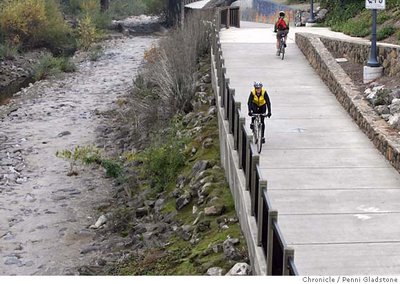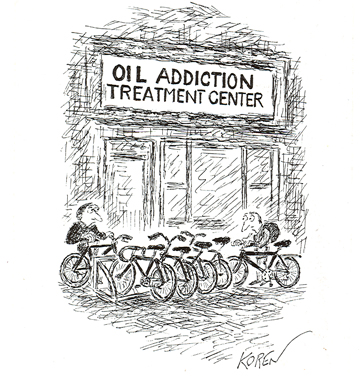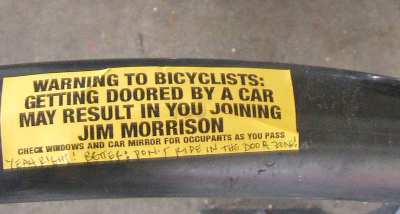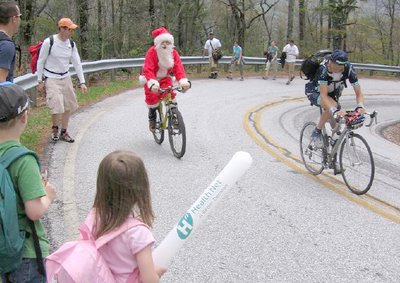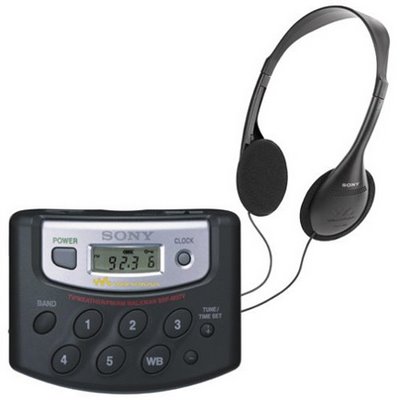
This week brings Thanksgiving, traditionally the start of the holiday shopping season--though the Christmas goods started appearing at my neighborhood Walgreen's before Halloween.
Granted that the holiday season has become an orgy of
crass consumerism and that many people have spiritual traditions not involving mistletoe, holly, and decked halls--and regardless of my own religious non-belief, which is slightly beyond that of Nietzsche--there is an undeniably pervasive tradition of year-end gifting to loved ones. Nearly every culture has some commemoration of the winter solstice, often involving some gesture of affection.
If you do have a current or prospective bicycle commuter in your household who has behaved well this year, and if you do exchange gifts in December, you might want to consider adding a few bicycling items to your gift list. As I describe on my
bike commuting tips site, my own bike commuting is due to an inspired winter solstice gift from my wife. (Like most American males, I stopped biking the moment I got my drivers license, and only smartened up and recovered cycling 18 years later.)
I'll spend some time this week looking at the gift options for the bike commuter in your household. Here are a few suggestions that might enhance your cyclist's commuting experience:
FOR THE VERY, VERY GOOD: NEW BIKEI can't imagine any cyclist who wouldn't be enormously excited at the sight of a new bike under the tree. Perhaps your present or prospective bicycle commuter has a road or mountain bike, but not a
dedicated commuting bike. Your favorite cyclist's enthusiasm for biking will be enhanced with options, one bike for weekdays and another for weekends. Variety is the spice of life and bicycling.
A bicycle is a high-ticket item, so your biker will need to have a spotless year of good behavior. Here are some suggestions on two categories of bicycles popular for everyday travel: commuter and folder.
Famed mountain bike pioneer Joe Breeze
shocked the bike industry a few years ago when he shifted his company,
Breezer Bikes, into an operation that
only offers commuting bikes. No kid's bikes, no mountain bikes, no touring bikes--just smart, practical commuting bikes, inspired by the utilitarian bicycles of Europe. Many thought Joe Breeze would be bankrupted quickly. "There's not enough demand for commuting bikes."
However, Breezer Bikes is still around, still making
only commuting bikes, and has inspired bike industry titans
Trek,
Specialized, and
REI to introduce commuting bikes.
Another exciting bike trend is the
broader availability of folding bikes, which are designed specifically for
intermodal bike commuters. Folding bikes compact down to smaller size, allowing the rider to board any train or bus to continue their trip. My present commute is three-miles
sans transit, so I don't have a folding bike in my stable. My wife has a
Bike Friday, which is a great bike, but more suited to travel rather than everyday commuting. Among the available options, I like the
Breezer Zig Zag folding bike, and the famed English folding
Brompton.
If your gift budget can accommodate it, a new commuting-specific bike would assure another year of good behavior from your household bike commuter. My
bike commuting tips pages have additional considerations for buying a bike. My best suggestion is to visit a
trusted local bicycle specialty retailer and consult with the staff.














